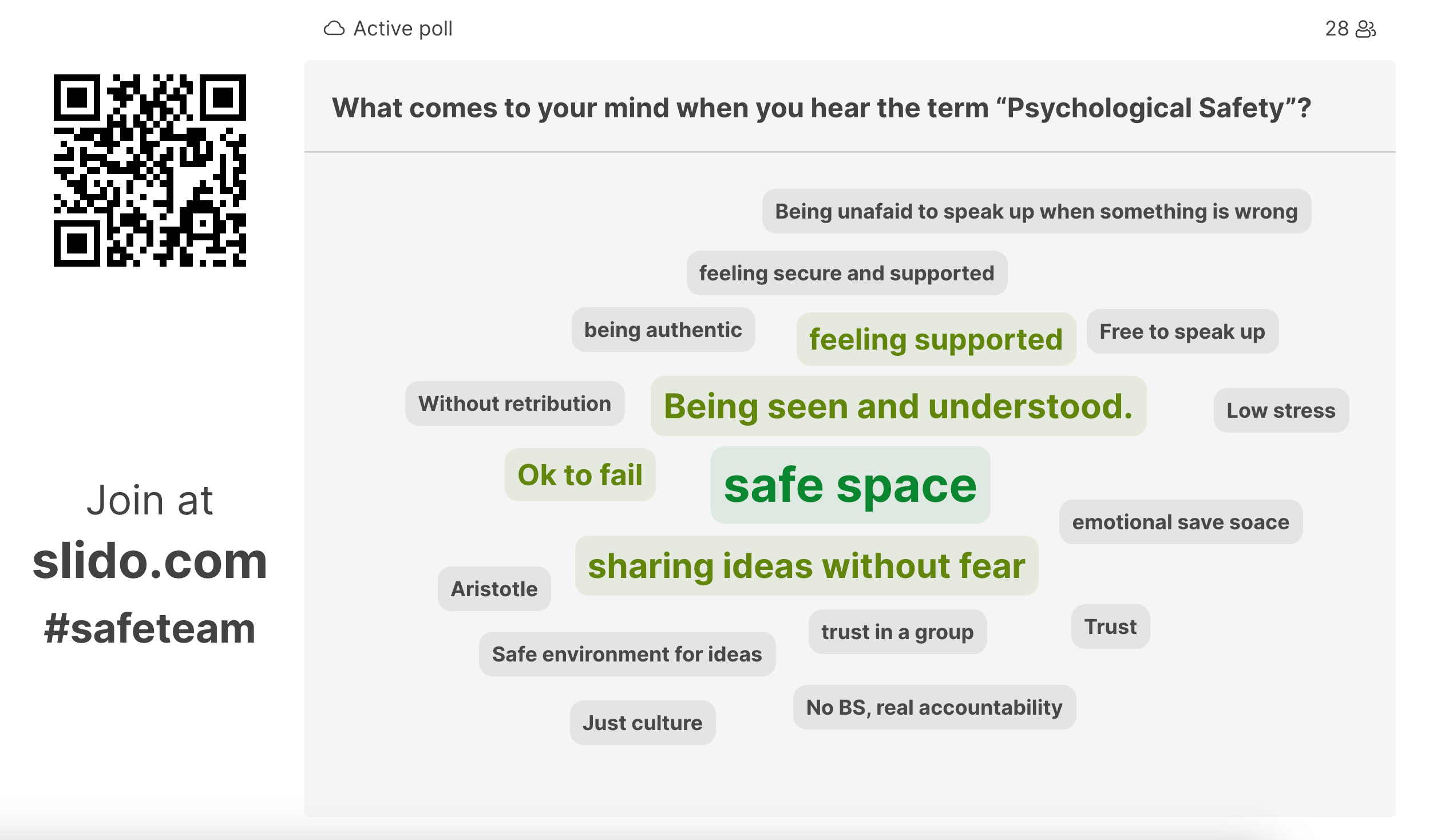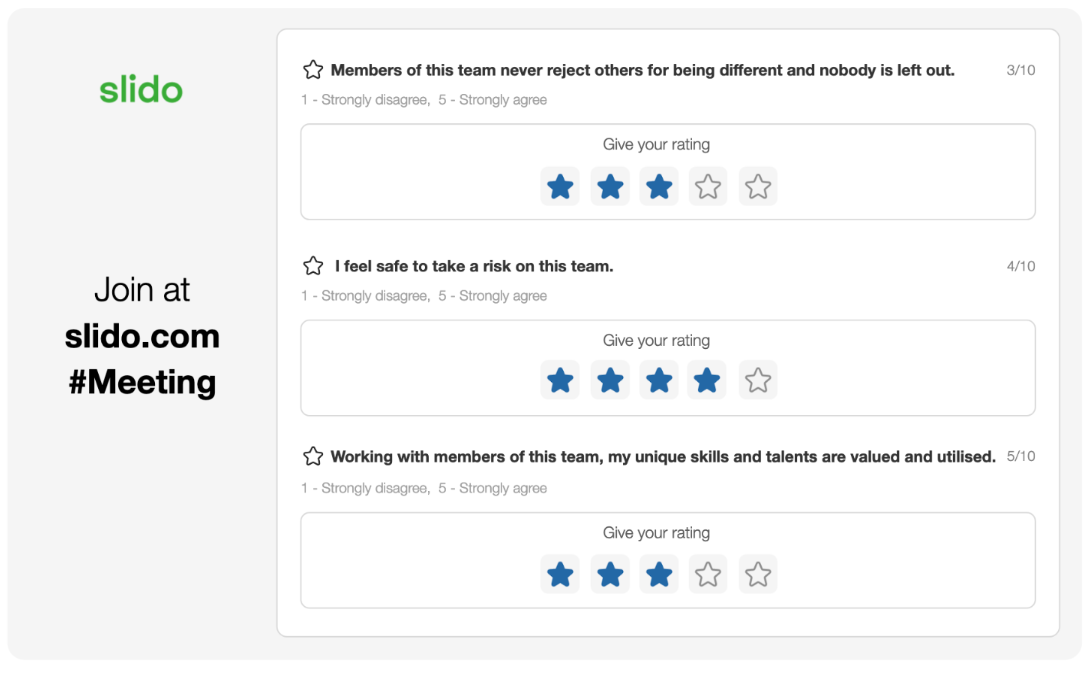Last week, we organized the first webinar of our new series on Psychological Safety and Leadership. We deep dived into this concept and its stages, impact on individuals, team dynamics and overall performance.
Here's a recap of the key takeaways and insights, you can access the slide deck here.
What is Psychological Safety?
We started off by asking our audience what the term Psychological Safety means to them, here’s what they thought:

Using a Word Cloud, participants are able to sum up their understanding in a word. This makes for a great visual, as when a word already in the cloud is repeated by another participant, they grow bigger on the presentation.
Learn more about the connection between Psychological Safety and team performance 👉
Why Psychological Safety is Essential for Performance in the Workplace
The four stages of Psychological Safety
Then, our very own Business Psychologist, Sofia Moltke-Leth guided us through the four stages of the psychological safety model by Timothy Clark - Inclusion Safety, Learner Safety, Contributor Safety, and Challenger Safety.
She then guided participants in some best practices on how to assess the current state and prioritization techniques for leaders to understand where to even start working on Psychological safety.
First things first, assess each individual’s preferences:
- Communication preferences - e.g. What’s the best way to share instructions with you?
- Feedback preferences - What is your preferred way of receiving feedback?
- Working preferences - What do you really enjoy doing, what gives you energy? What drains and frustrates you?
- Personal traits - Help the team ‘misreading’ your behaviors by sharing what you already know about yourself.
And then to look at the team as a whole. Where do they all feel in regards to the four stages of psychological safety? Here’s an example of how you can leverage Slido for this.

Learn more about how we run similar exercises at Slido with our own team 👉 How Psychological Safety Helped Us Build a High-Performing Team
Practical tips on how to move your team through all four stages of Psychological Safety
Sofia and Jo then provided some practical tips and tricks on how to get your teams through all four stages to help establish Psychological Safety.
Inclusion Safety
- Help individuals in your team to identify and understand their individual strengths both in terms of functional expertise and unique talents
- Everyone in the team shares their personal expectations for how you can work best together applying their unique talents
Learner Safety
- Leadership modeling by owning and talking openly about mistakes
- Run monthly retros which are structured around the behaviors she wants to see from the team, where they admit their wins as well as their failures
Contributor Safety
- Connect team members with each other for “not so obvious” collaborations and include people according to their talents in specific phases of projects
- Create a brainstorming space where people can contribute on a bigger level than themselves, and apply their unique talents where they seem fit.
Challenger Safety
- Deliberately create spaces where the team can challenge each other, you as their lead, and the strategy
- Allow planning sessions for people to give ideas for improvements for next financial year. E.g. processes, working patterns, team direction
Now, we’d love to hear from you - our community!
👉 How would you describe your team in terms of the four stages of Psychological Safety?
⭐️ Any tips and tricks on how to improve it?
Let us know in the discussion below.
_______
We really hope you enjoyed this webinar!
If you're interested in going more in-depth on how to build psychological safety in the workplace, join our hands-on Masterclass on May 31 at 4PM BST.

